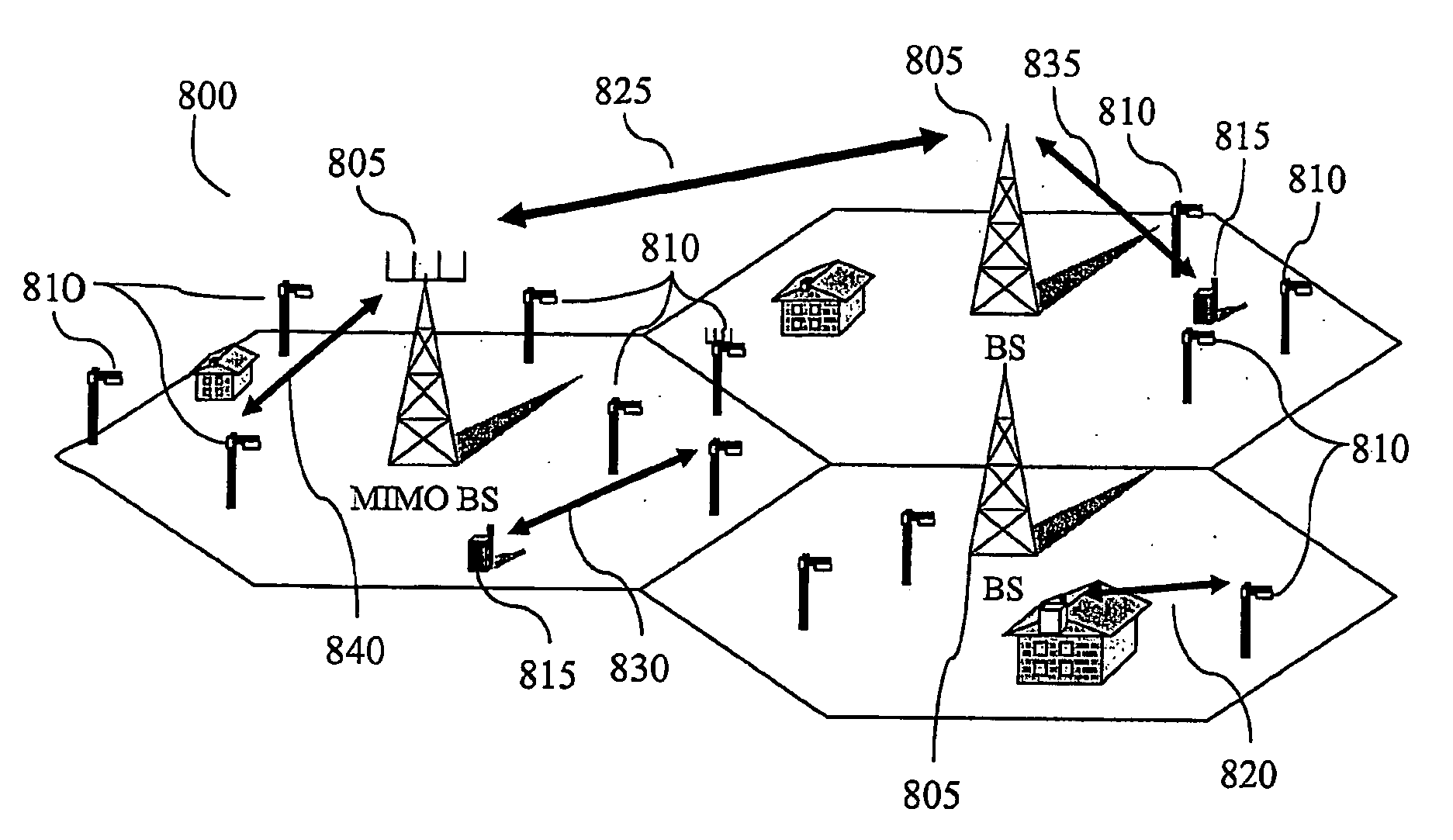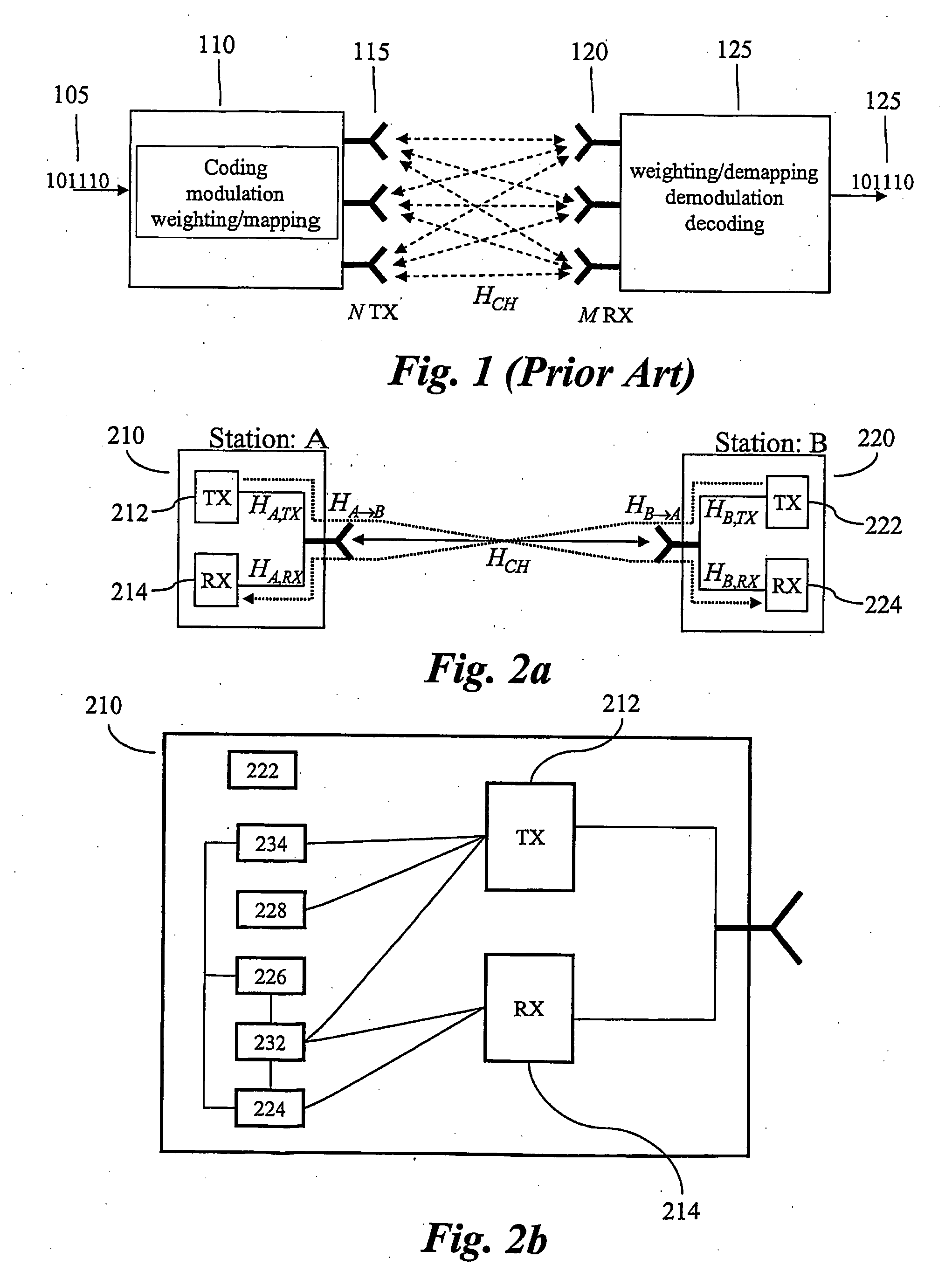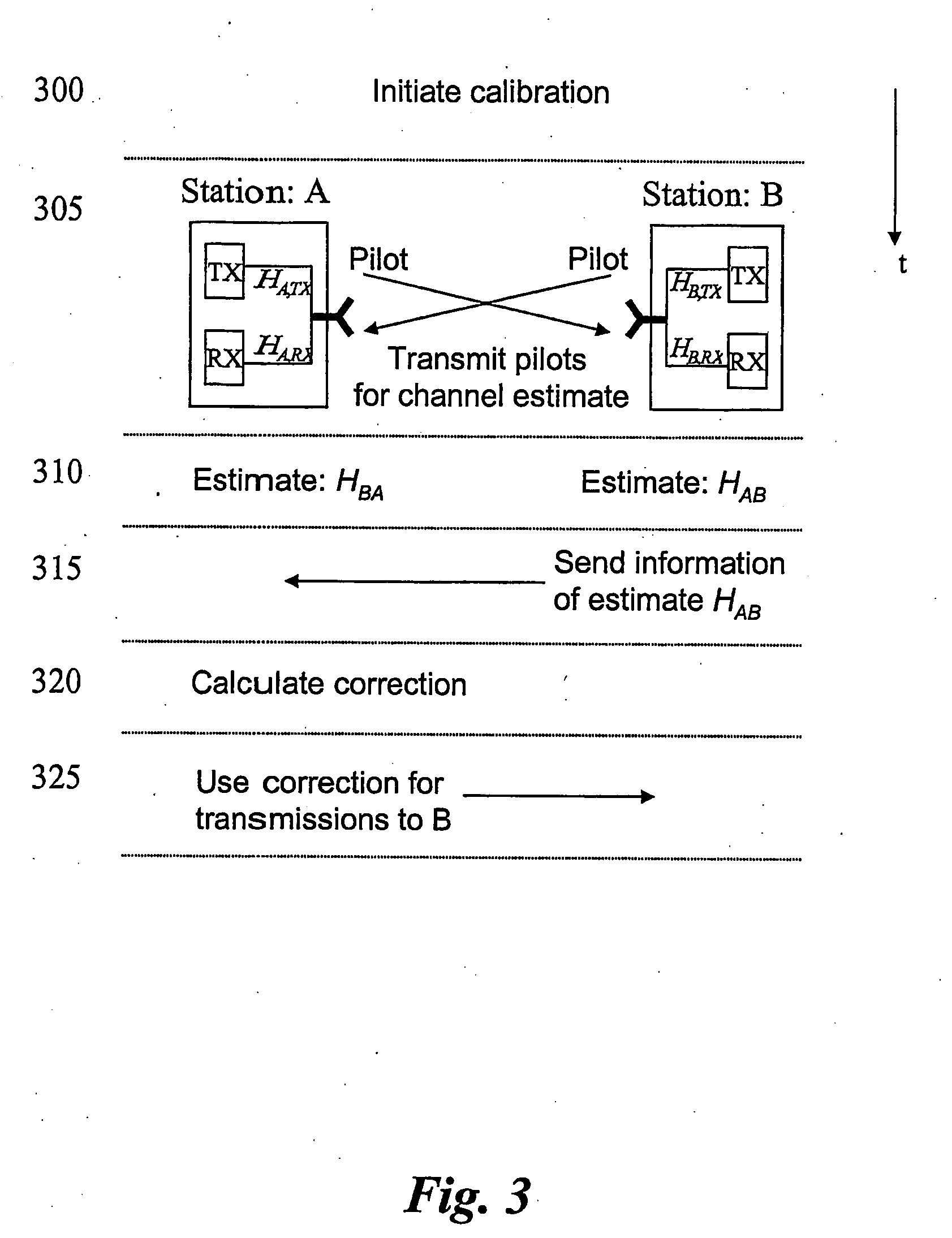Calibration Method To Achieve Reciprocity Of Bidirectional Communication Channels
a bidirectional communication channel and reciprocity technology, applied in the field of reciprocity of bidirectional communication channels, can solve problems such as inability to achieve reciprocity, and achieve the effect of achieving reciprocity
- Summary
- Abstract
- Description
- Claims
- Application Information
AI Technical Summary
Benefits of technology
Problems solved by technology
Method used
Image
Examples
first embodiment
[0047]In the method according to the present invention, described with references to FIG. 4, channel estimation symbols are sent both from station A 210 to station B 220 and from station B to station A. Therefore estimates in both directions, ĤA→B and ĤB→A, can be produced (corresponding to step 310).
[0048]After the channel estimation the stations exchange its channel estimation data, e.g. station B send ĤA→B to station A (step 315). Based on ĤB→A already available at station A and the received ĤA→B, a channel correction factor can be determined (step 320) according to:
HCorr=H^B->AH^A->B=H^B,TX·H^CH·H^A,RXH^A,TX·H^CH·H^B,RX=H^B,TX·H^A,RXH^A,TX·H^B,RX(4)
[0049]A signal S, to be transmitted from A to B, is pre-multiplied with HCorr resulting in the received signal (step 325):
R=HA→B·HCorr·S+N (5)
,where N is receiver noise. It is seen that the effective channel is modified into the reverse channel according to:
HA->B(eff)=HA->B·HCorr=HA,TX·HCH·HB,RX·H^B,TX·H^A,RXH^A,TX·H^B,RX≈HB,TX·HCH·...
second embodiment
[0058]In the method of the invention, described with references to the signalling scheme of FIG. 5, estimation symbols, or pilot, is transmitted in one direction only. In this embodiment, station A 210 first perform an open loop channel estimation by receiving a training symbol from station B. Based on the estimated channel, subsequent transmission form A to B is pre-multiplied with inverse of the channel estimate. Based on this, station B can report a correction factor back to station A. The correction factor is used for every transmission until next calibration instance. This is in essence a so called zero forcing scheme resulting in proportionally larger power is assigned to frequencies (assuming a frequency selective channel and e.g. OFDM) with high attenuation Possibly, one may avoid using high attenuation frequencies.
[0059]The correction factor fed back can preferably be in the form of a low order complex polynomial (possibly with exponential functions for any delays) and henc...
third embodiment
[0070]In the method of the present invention, described with references to the signalling scheme of FIG. 6, special estimation symbols (or pilot channel) is used in addition to the existing common pilot channel, to estimate a correction vector.
[0071]In for example, a MIMO scenario in which station A has nA antennas and station B has nB antennas, the frequency responses of the transceiver chains can be represented by diagonal matrices with elements corresponding to the response between the baseband processor and a particular antenna. For example, HA,TX is an nA by nA diagonal matrix and the channel's response is now an nB by nA matrix as seen by station B.
[0072]Following the example of calibrating station A through station B, similar to the first two embodiments, the channels from station A to station B can be estimated by station B through a known signal (a frequency domain column vector of dimension nA) generally referred to as the common pilot channel and here denoted by Pc. The a...
PUM
 Login to View More
Login to View More Abstract
Description
Claims
Application Information
 Login to View More
Login to View More - R&D
- Intellectual Property
- Life Sciences
- Materials
- Tech Scout
- Unparalleled Data Quality
- Higher Quality Content
- 60% Fewer Hallucinations
Browse by: Latest US Patents, China's latest patents, Technical Efficacy Thesaurus, Application Domain, Technology Topic, Popular Technical Reports.
© 2025 PatSnap. All rights reserved.Legal|Privacy policy|Modern Slavery Act Transparency Statement|Sitemap|About US| Contact US: help@patsnap.com



